Minyan reminds Joseph Israel of his boyhood in Cairo, Egypt
 By TAMAR FENTON
In an effort to connect with his heritage, local engineer Joseph Israel joined the Sephardi Minyan when he moved to Minnesota in 2002. The minyan, which was started by Lebanese immigrant David Khabie and former Minnesotan Abe Sclar more than 30 years ago, is a welcoming group for local Sephardic Jews who want to retain the worship melodies and traditions with which they grew up.
“Being Sephardic is a state of mind in the broader sense,” said Israel, who is now a co-leader of the minyan. “We come from so many different countries with so many different influences, but there is a commonality among the way we do things, the food we eat, our histories.”
Of the 14 million Jews in the world, about 3 million of them are of Sephardic origin, meaning that they trace their roots to Spain, Portugal and countries of the Middle East (also known as Mizrachi origin).
This minyan (group of at least 10 Jewish males) conducts monthly services in the basement of Kenesseth Israel Congregation in St. Louis Park, and approximately 40 people have attended services on Rosh Hashana and Yom Kippur. The minyan will next meet on April 18.
A Sephardi Minyan meeting took place on Sunday at Little Tel Aviv in St. Louis Park. Pictured above are (front row, l to r): Teddy Nachmias, owner, Little Tel Aviv; Yuval Dahan, (middle row): Tal Parente, Meyer Mechache, David Khabie, Nisso Khabie, Joe Israel, Binyamin Elnekavah, Jonathan Grad, (back row): Gavriel Darsha and Yossi Ben-Harush. (Photo: Courtesy of Nisso Khabie)
The Shabbat and holiday services are Orthodox, and there is a mechitza (physical barrier) between the men and the women in the sanctuary. All men who attend services receive the honor of being called to the Torah.
The use of the space has been generously donated by Kenesseth Israel, and the minyan has been cordially accepted by Kenesseth’s leadership, including Rabbi Chaim Goldberger.
“Many local Sephardic Jews already belong to synagogues here,” Israel said. “We are not trying to create our own synagogue. Rather, we just want to get together periodically and do things the way we remember doing them with our parents and our grandparents.”
The minyan provides an opportunity for Sephardic Jews to join together, socialize and pray using their traditional melodies and customs.
“We have beautiful traditions, and it feels so soothing to hear the melodies that we use for prayer and Torah reading,” Israel said. “I am reminded of how I felt sitting with my father in our synagogue in Egypt when I was a boy.”
Israel’s father was the hazzan (cantor) in his synagogue in Cairo, Egypt, and at Ahi Ezer Congregation in Brooklyn, N.Y. His great-great-great-grandfather, Yom Tov Israel, was the chief rabbi of Egypt from 1866 until he died in 1891.
Sephardic Jews have the distinction of being the first Jews to settle in America more than 350 years ago. Those first 23 Jewish Americans — descended from Jews who had fled the Inquisition in Spain in 1492 and then settled in Brazil — came to what is now New York in 1654, seeking a country in which they could live without fear of religious persecution.
It is unknown how many Sephardic Jews reside in the Twin Cities, but Israel is hoping to find them all. Information about the minyan has been spread only through word of mouth, but he now hopes to reach more local Sephardim as well as those who are Sephardim at heart or who simply want to experience a Sephardic service. Everyone is welcome.
“I hope that this article will create more awareness about the local Sephardic community, bring the diverse Sephardi community together for Shabbat and holidays, help the Sephardi Minyan to grow, and expose the broader Jewish community to the beauties of Sephardic culture,” Israel said.
Though most of the activities of the Sephardi Minyan revolve around worship, Lili Khabie — who along with her husband and brother are thought to be the only local Jews who were raised in Lebanon — hopes to create an opportunity to bring women together to celebrate Sephardic culture.
“I love the Jewish community here and I feel very much a part of it,” Khabie said. “But you don’t forget who you are and where you come from, and you don’t ever stop longing for those traditions that are most familiar to you… I believe that all Jews should know where they came from, and one way to do that is for the women to keep our Sephardic traditions alive and share them with the whole community.”
***
The Sephardi Minyan will meet 8:45 a.m. Saturday, April 18 at Kenesseth Israel, 4330 W. 28th St., St. Louis Park. Sephardic Coffee Socials also take place. For information, contact Joseph Israel at:Â sephardiminyan.mn@gmail.com.
For information about starting a Sephardic women’s group, call Lili Khabie at 952-926-4162.
Â
Â
Passover Sephardic-style
Passover prohibitions differ between Sephardic and Ashkenazi communities and were established by the leading rabbis of each group in the 16th century.
Following the ruling by Rabbi Moshe Kouchi of France, Ashkenazi custom dictates that all foods resembling or even looking like forbidden foods are prohibited on Passover. Sephardic tradition follows the ruling of Rabbi Joseph Caro, who allowed the use of kitniyot — generically called legumes, but including rice, corn, soy beans, lentils, string beans, peas, peanuts, mustard, sesame seeds and poppy seads — which are not permitted in Ashkenazi tradition.
Many Sephardic homes include rice in their seder meal to reinforce this distinction in traditions. — Tamar Fenton









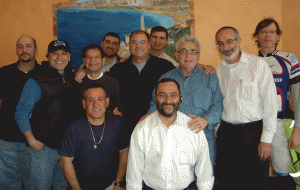
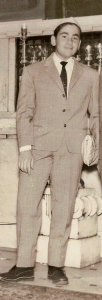


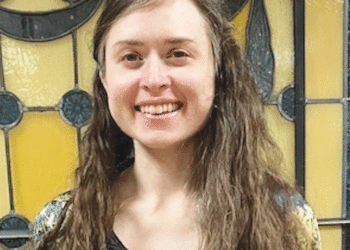

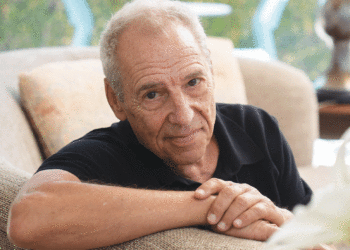
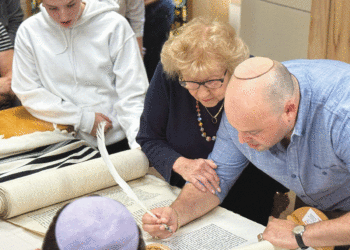





One sephardic south american Jew here in Rochester, MN. Will be nice to here from your Minyan in the Twin cities. Looking forward to meeeting you soon,
O. Elias Serge
Shalom Elias,
It is great to know that there are Sephardim in Rochester. We have been fortunate to have good participation and we continue to hold a Minyan every month as was our plan. We are becoming more of a community, with good participation.
We invite you and all the Rochester Sepahrdi Kahal to come and visit and participate with us. This may give us the opportunity to have a party and celebration.
Please reply with your e-mail so we can be in touch. We are also working on a website; take a look at we have done so far.
the e-mail is SephardiMinyan.mn@gmail.com.
Hope to hear from you soon